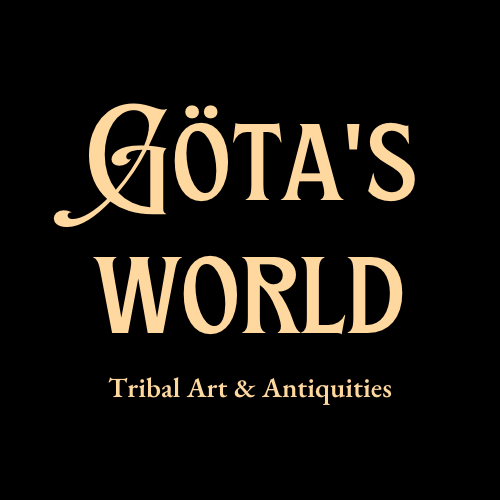Tibetan Human Thigh Bone Silver Inlaid Trumpet Kangling
Tibetan Human Thigh Bone Silver Inlaid Trumpet Kangling
Couldn't load pickup availability
Late 19th or early 20th century, Tibet.
Important rare human bone trumpet decorated with silver and copper repoussé metal alloy. Silver sheet (untested) surrounds the ends of the bone, which has been shaped and cut to form a narrow band with the patellar groove still present. The shaft covered in thin copper wire and ends in a decorative silver mouth piece, while the patellar groove has been hollowed out to form a double bell. The silver sheet over both ends with elaborate repoussé decoration and inlays of turquoise stones and red coral.
Kangling (Wylie: rkang-gling), literally translated as "leg" (kang) "flute" (ling), is the Tibetan name for a trumpet or horn made out of a human tibia or femur, used in Tibetan Buddhism for various chöd rituals as well as funerals performed by a chöpa. The leg bone of a criminal or a person who died a violent death is preferred. Alternatively, the leg bone of a respected teacher may be used. The kangling may also be made out of wood or animal bone. The kangling should only be used in chöd rituals performed outdoors with the bell and thöpa damaru or chöd damaru. The thöpa damaru (called also chang te'u or thod-rnga) is made from a male and female skull bone or calvarium, cut well above the area of the ear, and joined at their apex. In the Tantric chöd practise, the practitioner, motivated by compassion, plays the kangling as a gesture of fearlessness, to summon hungry spirits and demons so that she or he may satisfy their hunger and thereby relieve their sufferings.
The kanglings as well as kapālas (and damarus) were usually made from bones collected at sky burial (jhator) sites, an ancient Tibetan burial custom, still practiced today, in which the bodies of the dead are dismembered and scattered over open ground to ‘give alms to the birds’. It is the Tibetan belief that the body is nothing more than a vessel and, upon death, it should continue the cycle that is life; therefore, corpses are exposed to the elements, in order to decompose, in designated areas known as charnel grounds. Once collected, the bones would be specially prepared and elaborately anointed and consecrated before use. It would then be decorated with carvings, jewels of silverwork before being used as a ritual implement.
Excellent condition. Light wear consistent with age and use. Lovely dark patina. Size approx. 31,0cm x 5,2cm x 7,7cm.
NB! All of our human osteological specimens are aged ethnographical/ceremonial artefacts (eg. kapalas, kanglings). We don’t sell, buy, or pass on human osteological specimens with unknown origin whose characteristics do not meet the above criteria. Breach of the sanctity of the grave (Criminal Code of Finland, Criminal Law 563/1998, Chapter 17, Section 12).
Provenance: Swedish private collection
For a similar examples see:
Bone pipe, National Museum, New Delhi, Accession Number: 87.792 (https://indianculture.gov.in/artefacts-museums/bone-pipe)
Rkangling, The Metropolitan Museum of Art, Accession Number: 46.34.11 (https://www.metmuseum.org/art/collection/search/505238)
References and further reading:
The practices and rituals of Tibetan Kapala skull caps, Ancient Origins - Reconstructing the story of humanity's past, April Holloway (https://www.ancient-origins.net/ancient-places-asia/practices-and-rituals-tibetan-kapala-skull-caps-00945).
Charnel Ground Ornaments and Implements, Rufus C. Camphausen (www.yoniversum.nl.).
Instruments of Burma, India, Nepal, Thailand and Tibet, Thomas E. Cross, M.M. Thesis, University of South Dakota, May 1983, pp. 73-75.
Tibetan Mahayoga Tantra: An Ethno Historical Study of Skulls, Bones and Relics, Andrea Loseries-Leick, 2008, B.R. Pub. Corp. p. 225.
Body Matters: Exploring the Materiality of the Human Body, Luci Attala & Louis Steel, Cardiff, Wales: University of Wales Press. p. 166.
Tibetan Rituals of Death: Buddhist funerary practices, Margaret Gouin, Published March 29, 2012 by Routledge.
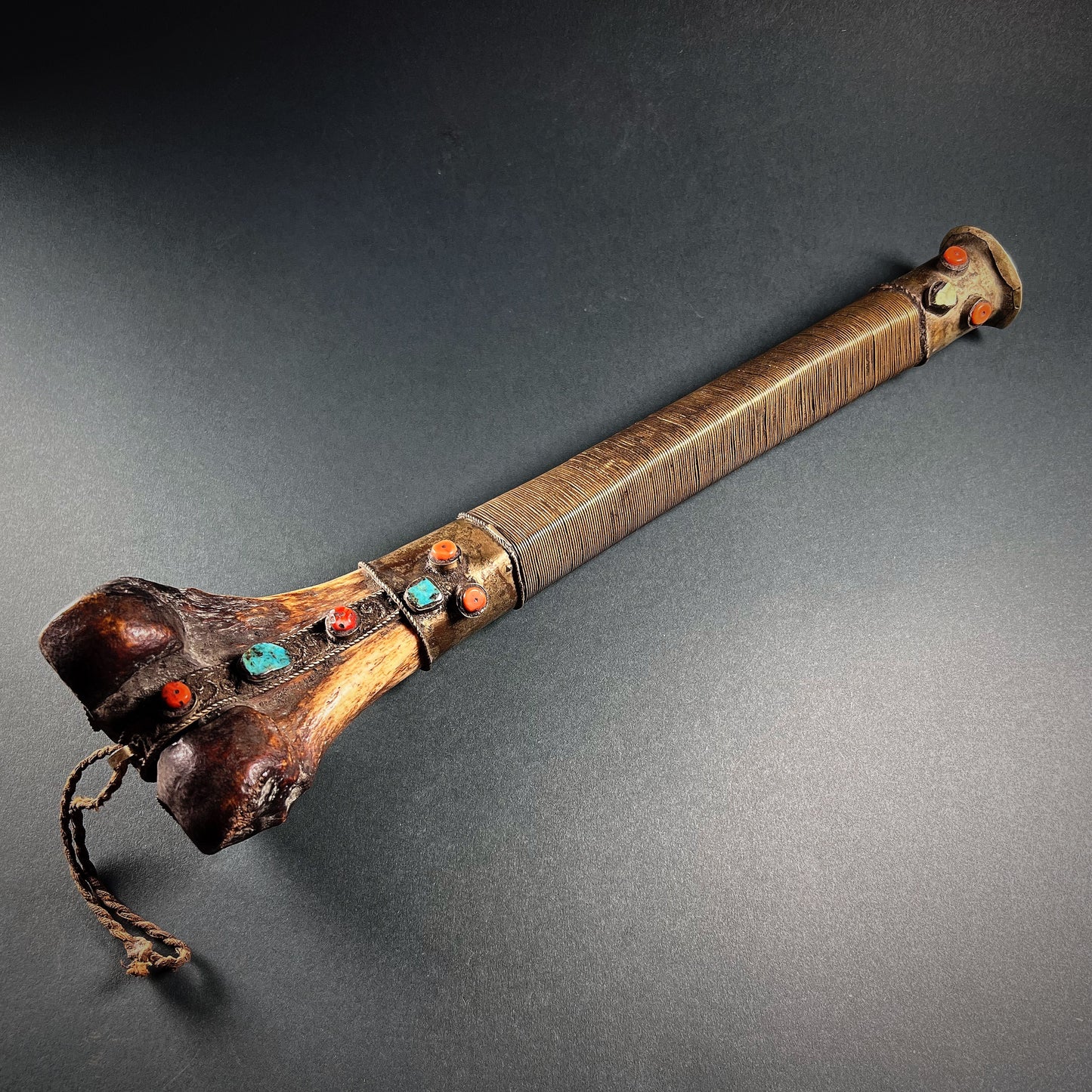

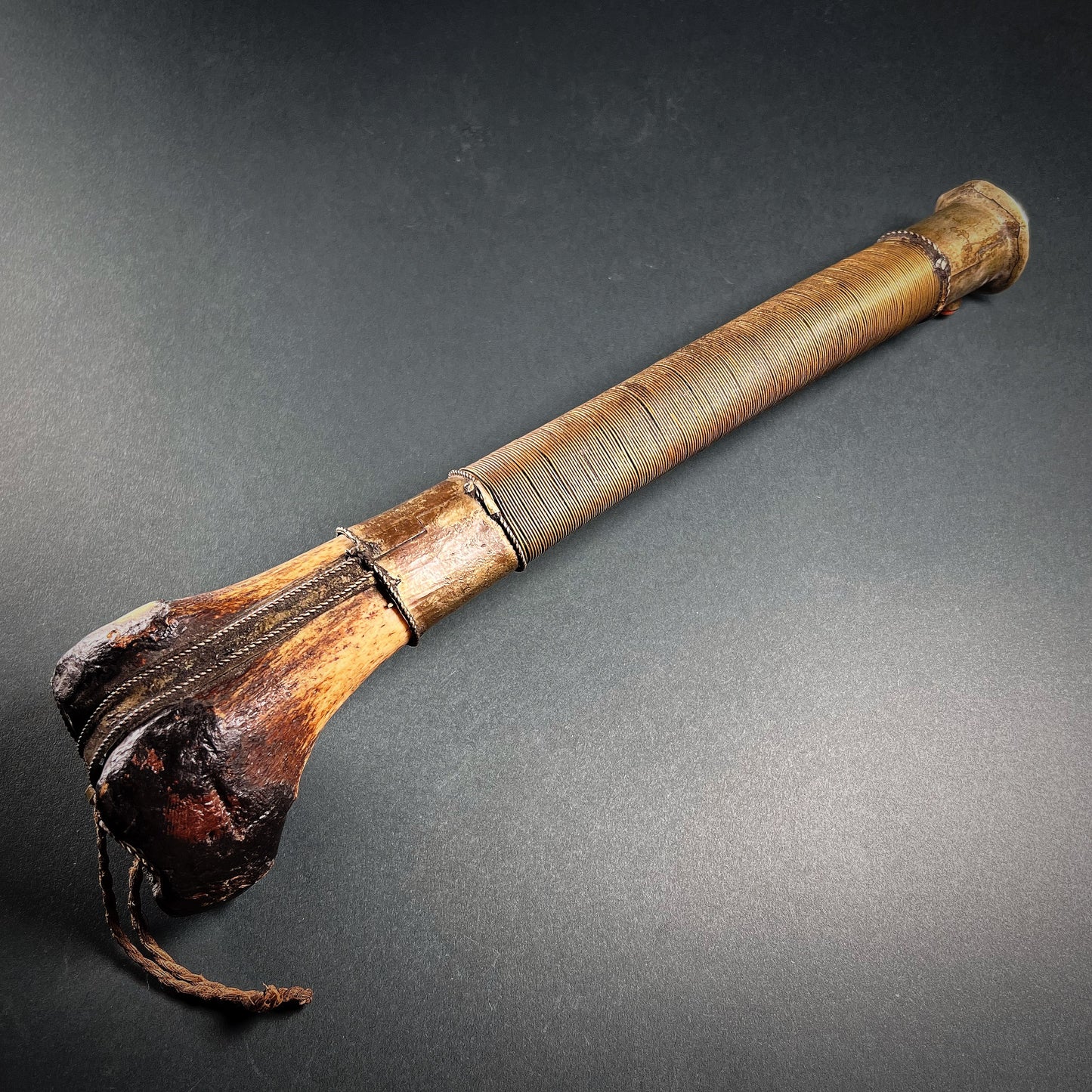
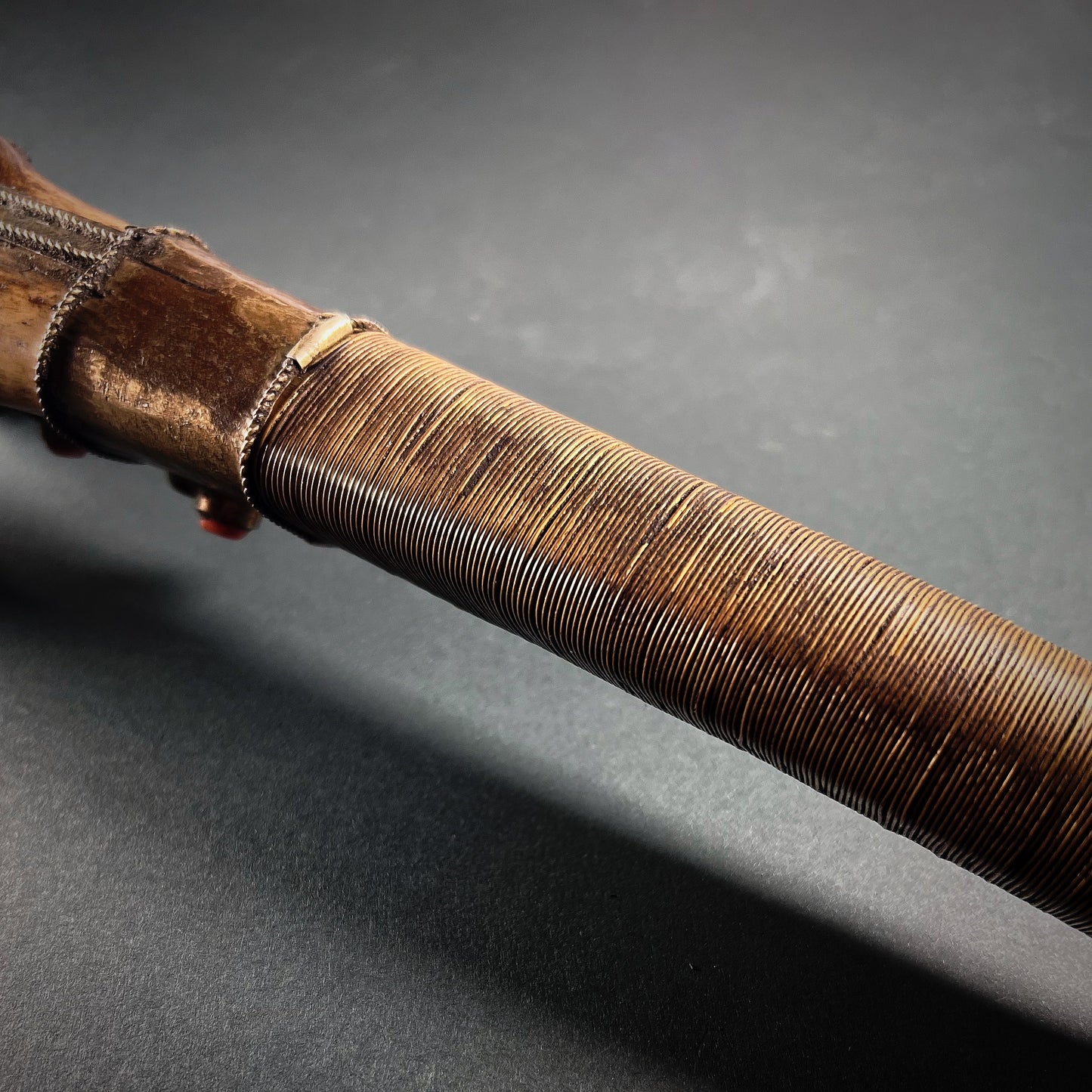
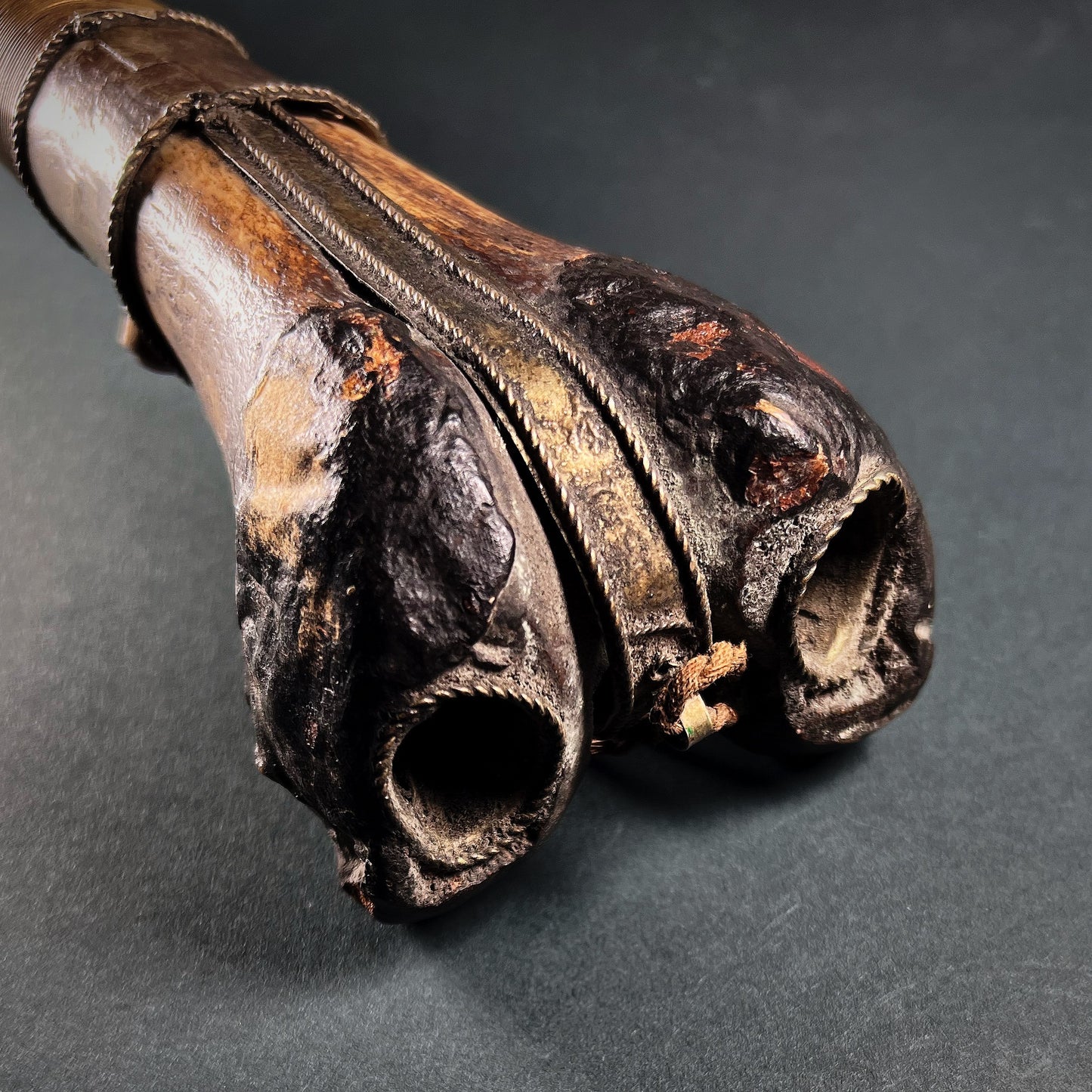
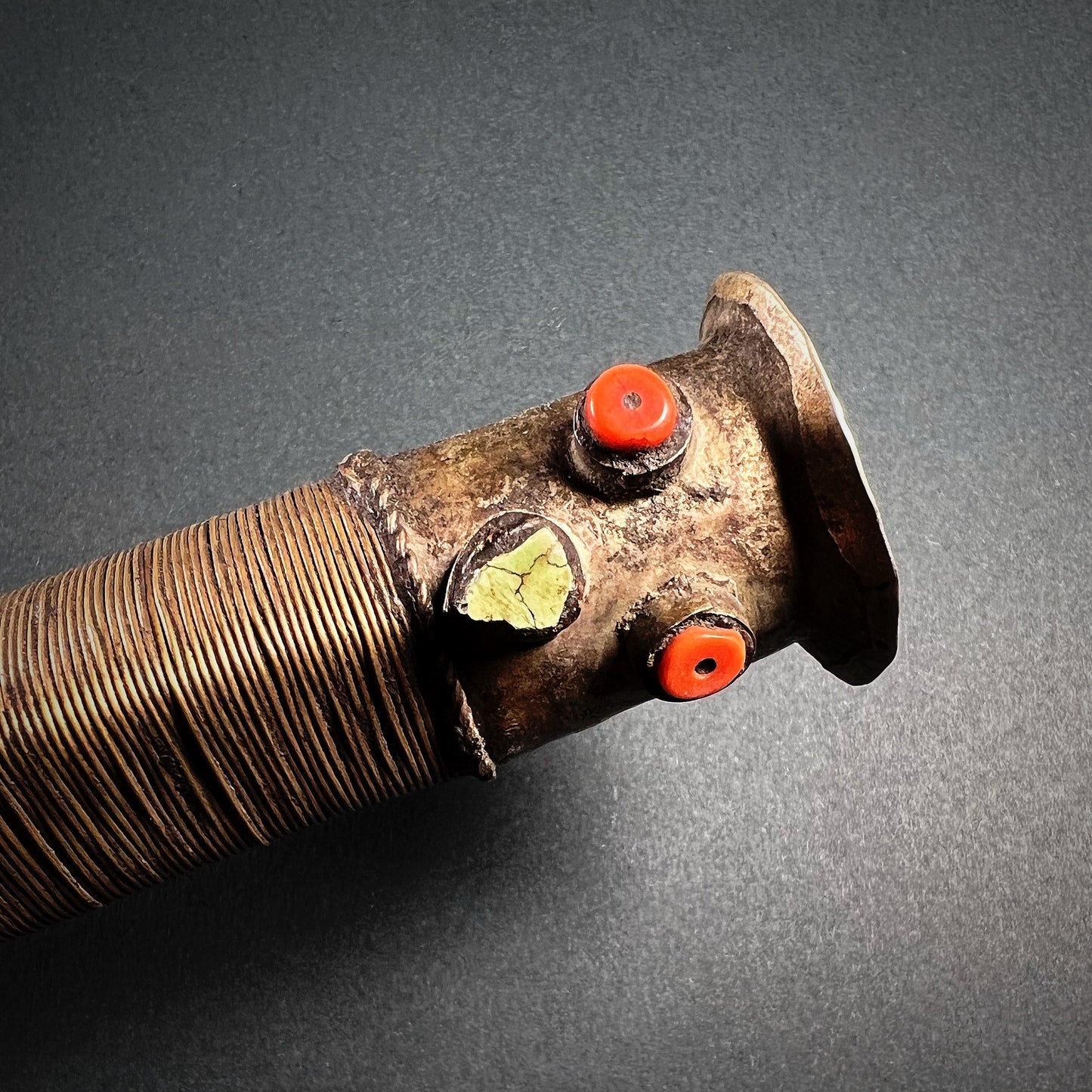
-
Shipping
The shipment will be prepared in the course of 3-5 days and dispatched via Posti Group Oyj or purchased item(s) can be picked up from our shop during the store's opening hours (Tarkk’ampujankatu 4, 00140, Helsinki, Finland). Within the Finland, all items are shipped via Posti Group Oyj unless otherwise requested. We pack the items carefully and mainly in recycled materials because we want to save nature. You will receive the tracking number for your items by e-mail.
-
Returns
Returns and exchange will be accepted within fourteen days (14) of receipt at the purchaser’s cost to include freight and packaging. Items must be returned in the same condition as when they were shipped, and will not be accepted if damaged or altered in any way. Please inform us via email (info@gotanmaailma.fi) or by calling +358408408352 before sending. We do not accept returns more than 14 days after delivery.
